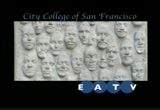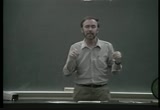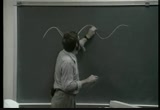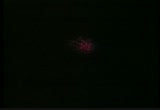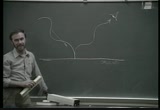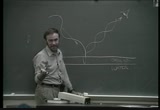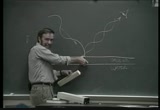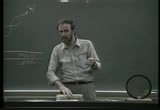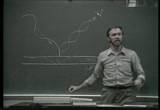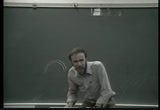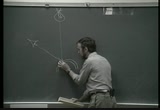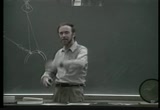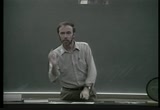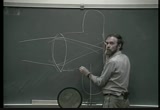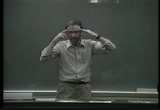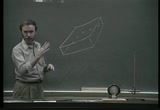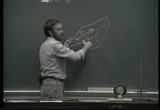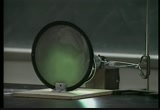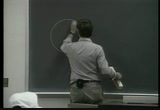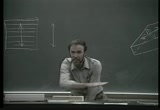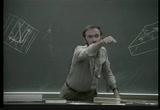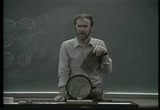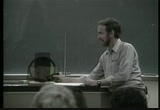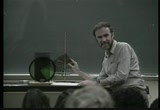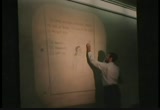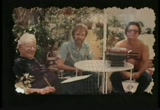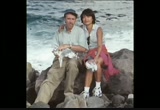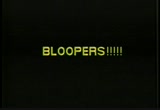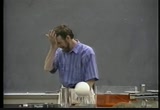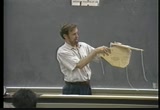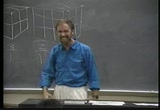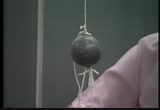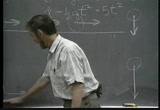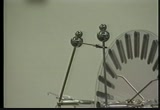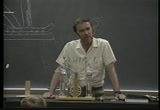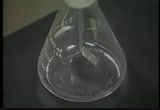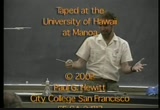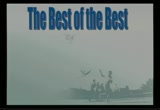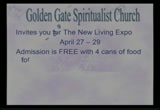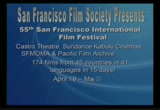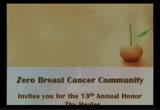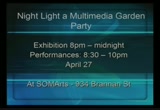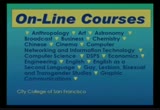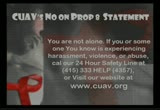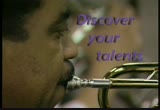tv Democracy Now LINKTV April 19, 2012 8:00am-9:00am PDT
8:00 am
8:01 am
and as the peacock turns, you noticed that the colors-- the colors of those feathers kinda change a little bit. or you see a child blowing bubbles, great big bubbles, and the bubbles floating off in the wind, yeah? and you look at the bubbles and you see--wow, what you see? beautiful rainbow colors in the bubbles. you see the spectrum. you see all the colors reflecting from the bubbles. isn't that right? or sometimes you take, like, an abalone shell and you hold up the abalone shell and you see the beautiful colors. we call these iridescent colors, yeah? and you're looking at the shell and then you turn the shell a little bit and--hey, wow, the colors change a little bit. or sometimes on a rainy day, you look at gasoline on a wet street. and you look at the gasoline's splotches and--wow, man. they have beautiful colors. and there are rings of colors too. do you have another-- the rings go all the way around like you got green. the green will continue and come all the way around. it's sort of like a contour map, a microscopic contour map of the different elevations of the gasoline on that wet surface. whenever you have a double reflection like that,
8:02 am
oftentimes i should say, when you have a double reflection from two surfaces, these double reflections give you beautiful colors. we call this interference colors. we talked a little bit about interference before, gang. remember? let's briefly review that interference of waves. consider a wave like this maybe, yeah? now, consider another wave locked right on top of it. same frequency, same step, physically say, same what? phase, okay? right in phase. those two waves will add together to be what? a wave of greater amplitude. greater amplitude, same frequency, okay? no big deal, but how about this? consider a wave and another wave starting maybe here. you know, starting at a different point. that wave is out of phase. if it's half-step out of phase, was he in a 180 degrees out of phase. these two waves are out of phase of one another, 180 degrees. they combine to produce what, gang?
8:03 am
ain't that nice? they cancel out, okay. one wave cancels another. the same thing happens with light. i can show you what i mean with this laser. i'm gonna shine a little laser spot on the wall. i'll put the lights out. you guys see that some-- places there, it's very, very--there's little dark spots--splotches. and some places is very bright? lets talk about that and see what's going on. what happened here now, gang, is the lights coming through piece of glass and the glass is irregular and it's kinda fanning out and making a spot on the wall. but there's bound to be some places with that light comes -- in phase here with maybe another point over here. that they come right in the phase and be extra bright. and right down below it might be light coming in like this and light coming in from another little part of that little lens really there like that. and when those two gang up, guess what they do, gang? begin with co.
8:04 am
cancel out. cancel out. and over here, they add up. so over here, you'd have a region that's dark, okay? and that little dark region is the result of light interfering, okay? destructively. over here, it's light in deferring constructively. so you get those bands or those little splotches because of the light interference. you get the same type thing with gasoline on a wet street. here's some light reflecting off some water, okay? light reflects off the water and your eye is up here and your eye sees the light. let's suppose this is blue light, pure blue light shining down, okay, shinning down on some water and bounces off
8:05 am
and gets into your eye. let me ask you a question. what color would the eye see? blue. it's an easy one. begin with blue. i got b. begin with b, okay? you can see blue. you can see blue, right? but let's suppose it's not shining on the water. let's suppose it's shining on gasoline. now, what color is the eye gonna see? blue. begin with b. blue. blue. it's still gonna be blue because it's reflected and we know that light doesn't change its frequency when it reflects. if you got a blue shirt on, you stand in front of a mirror, what color is the image? blue. how about a red shirt? red. could you do green? you get the idea, okay. light doesn't change frequency when it reflects. but what if this gasoline is floating on a surface of water and it will do that. now, you've got two surfaces. some light is reflecting off like this, but some of that light goes down through
8:06 am
and reflects off the water surface. and if it does that in such a way that this distance puts the reflected wave 180 degrees out of phase or out of phase 1/2 step. then when it gangs up with this one, what's it gonna do, gang? what's the eye gonna see? nothing. nothing. the eye is not gonna see light. the lights cancelled out. you see that? now, how thick this is has to do with the wavelength of light while what work for one thickness won't work for another. and it has to do with whether or not the light changes phase when it hits the different surfaces? i'm not gonna get into that part now. it's footnoted in your text. suffice to say, light from a double reflection might have such a distance-- extra distance that by the time it gets back up here, it's out of phase with the part the reflected from the top. that is destruction interference. the eye gonna see nothing. you're not gonna see this in your local environment. what you will see in your local environment
8:07 am
is white light from the sun. the sunlight coming down and hitting the gasoline on a rainy day. you've all noticed that. you notice that? it's gotta be a rainy day that the gasoline gives you the color. why? 'cause the gasoline gotta float on water to give you two surfaces to make reflection from, yeah? okay? now, when white light hits for this particular thickness, the blue is gone. you check with your neighbor and see if your neighbor knows. if the blue is gone from the white reflecting, what color is the eye gonna see? go. what's it gonna be, gang? - green. - something. how many say a yellow or an orange or something like that? yeah, yeah the complementary color of that shade of blue, yeah? we talked about this. we talked about the blue sky, remember?
8:08 am
the blue sky scatters off blue. so given enough sky for the light to get through by the time light gets to you and all the blue is scattered, what do you get left, gang? you get the complementary color. okay? sorta like the orange or the yellow, yeah? so when you take one color out of white light, what you see is the complement, huh? in the same way, the water absorbs the red and so what do we see the red? we see the-- and what do we see the water? we see the water of cyan, the complementary color. same type thing here. now, if you understand that, you can see this. let's suppose the light is coming down. the same thickness of gasoline now, but the light is coming down on a more grazing angle and bounces to your eye. you could do that by taking your eye and say, "hey, i see it sort of a yellow." and you got on like this and all of a sudden, oh, it changes to a different color. and some say, how come it changes? and you say, what is-- no reason for that. it's different angles, different colors. maybe that's--come on. why does it change, gang? the apparent thickness would be greater. wouldn't it? yes. if you're coming in at an angle like this,
8:09 am
isn't that a thicker path than this one here? huh? huh? it's like a worm crawling through a book. the worm crawls from the book, from here to here and says, "hey, pretty short book." now, you hold the book like this and the worm crawls through, as it--"my gosh, an encyclopedia," okay? you get a different apparent thickness for the way you hold it, yeah? and the same thing would happen with light and so light coming in like this. you would cancel a longer wave or a shorter wave? neighbor? through a longer path, would you cancel a longer one or a shorter one? - a longer one. - longer one. so let me ask you a question, gang. let's suppose you happened to cancel out the yellow. and where you're seeing, honey, you ain't seeing the white light, you seeing the white and the yellow ain't there anymore. the yellow have been cancelled. what color your eyes see? check it. what's the neighbor say? if you cancel the yellow, the eye gonna see what?
8:10 am
blue. blue? can you see it's blue? get it? magenta. this saturday night, when you take your bath, use some soap. in fact, splurge. use bubble bath. get a whole lot of bubbles in your bathtub. now, you're taking your bath and your light up above, there's an incandescent lamp, white light, okay? white light shining down on the bubbles. take a look at those bubbles closely. guess what, gang? the highlights ain't white. the highlights are all different... - colors. - hue. how many have noticed that already? how many people have taken baths year after year after year and never looked at the bubbles? look at the bubbles on saturday night, and see if you don't be seeing the bubbles got different colors. and your friends say, "how come the different colors?" and you say, "that's an example of?" physics. begin with i. interference. interference. interference, that's right. you got a bubble like this,
8:11 am
maybe you got the white light up above, okay? okay. and the white light coming down-- here's your eye right here. light come down, hit the bubble, bounced to your eye, yeah? but some of that light bounces from the bottom surface and goes to your eyes. - is that right? - right. aren't there two surfaces to that thin bubble in the way that thing filled? two surfaces. part bounces from the top surface, part from the bottom. hey, what if that extra distance going down through is such that it will cancel out one of the frequencies over here? then, honey, that eye ain't gonna get it. now, if you got white coming down, there's no cancellation. you're gonna see white. but if one color is canceled, you're not gonna see white. let's suppose the color that's canceled happens to be red. then the eye will see what color for that particular bubble? you guys know your color rules? no.
8:12 am
you gotta know what the complementary color of red is. we take all the red away, what do you got? green. you get that green cyan. you got that cyan, the greenish-blue. so the eye over here is gonna see what? greenish-blue, all right? now, you point to the bubble and you say, "hey, that's a greenish-blue bubble right there." right. your friend. your friend looks down. and your friend looks at the same bubble. but for your friend-- this is a different thickness being canceled. maybe this different thickness, maybe what's being canceled here is the yellow. and so your friend sees that light, white minus the yellow, you say, "hey, look at the greenish-blue bubble." and your friend says, "no, it ain't. it's a..." yellow bubble. "blue bubble." so your friends says it's blue, you say it's cyan. who's right? me. what happens in the tub? "i say it's cyan." "i say it's blue." "i say it's cyan." wham, boom--bubble bath. okay, see what's happening? what color you see depends upon what?
8:13 am
with everything. what you see depends upon what? do we all see the same thing? no. huh? depends on your point of view. open up the hood of a car, have the mechanic look at it. now, you look at it. you see the same thing? you see the same thing? no. i remember years ago, a guy was passing around a picture of his girlfriend, says, "hey, you wanna see my girlfriend, man? look at this." takes out this picture, he shows the picture. and we're all looking at-- we're feeling sorry for him, you know? [laughter] and--but to him, to him, he's--"that's my girl." and we're like, "oh, my god, -- pretty." and you start to wonder, do we really all see the same thing, huh? huh? over here, these-- the different bubbles depend upon your point of view, where your head's at, right? what you see depends upon where your head's at. think about it, gang. and you get the different colors. you know these camera lenses? you see these camera lenses.
8:14 am
you see that violet hue on the camera lens? ever see that, coated lenses? and they look violet, don't they? do you know why they look violet? no reason for that. it's just one of those-- no, come on. you know why they look violet? there's a color being canceled. there's a color being deliberately canceled. and the color being deliberately canceled is a color that we're most sensitive to. and if we wanna cut down that reflection in that lens so we don't photographed by film, and we can only do it for one color. we're gonna pick the color that the eye is most sensitive to, that the sun is emitting mostly of. and what is that color, gang? begin with a y, end with mellow. try it. yellow. well, all right then, y-e-l-l-o-w. try it. yellow. good, good. okay, we got it. okay? here's what happens. have these lenses, camera. here's what the problem is. light will be coming in, and come to focus right there, and that's nice 'cause you got your camera film right there, and you want the cam to focus. but some of the light reflects off.
8:15 am
it comes out, you don't care. but then comes back in, reflex out, you don't care. and then comes over here. and part does this. and that comes to focus here. and so what's it gonna do is photograph your film. you don't want that light getting there. you like to get rid of it. there's a way to get rid of light. you can cancel it. so what you do, at least for the yellow part, you can put a thin film there. and that film is one-quarter the wavelength of yellow light. so the light that bounced from here also is ganged up by light that goes here, a quarter, a quarter, a half. and what happens is you'll cancel it out. and so that thin film will cancel all this. it won't happen, and you'll be back to your nice, sharp picture, at least, for the part of the light in the middle of the spectrum. so you, out here--look at the thin--this little thing. if it's canceling yellow on this side, it's canceling yellow on this side 'cause it's the same type of thing. you're getting a double bounce out here. so when you look at that purplish surface, okay,
8:16 am
that purplish surface of the lenses, it isn't like they got some purple gunk they put on there. no, no, no. it's very, very clear. but the thickness is such that it will cancel out the yellow and give you the complementary color, so you see your coded lenses, the nice purplish color. ain't that neat? you like? yeah. yeah. i bet-- gang, we'll talk about polarization. we talked about charged polarization before. we talked about, like, negative, being on one side of a molecule, positive, on another. polarization, in this sense, is altogether different. we're talking about the lineup of waves. if i take a rope and tie it to the wall, and i shake the rope up and down like this, guess which way the wave will vibrate. how many say, "oh, probably like this"? hey, come on, come on. trick question. no, no. if i shake it up and down like that, the rope will vibrate like that. and the vibration is aligned. we don't say aligned. we say it's polarized. if i shake the rope back and forth horizontally, then i'll generate a horizontally polarized wave.
8:17 am
okay? you saw the example in the textbook. if i pass these waves through a picket fence, maybe the picket fence can filter them out. it turns out, if i have a picket fence where the fence stakes are all vertical, i have vertical openings. and i shake my rope, and it goes right through the opening. it's like the opening weren't there, the shake goes right on through and the wave travels. that's easy to see. it is very conceptual. if i take the rope and shake it sideways however, it can't--the vibration can't get through the fence. and so what the fence does is it blocks it. and so that's a filter. and i have over here such a thing. here's a polarization filter, okay? and that's what this is. this will allow light to vibrate through going only one way, not another way. i don't know what the plane of this is. i can't see. but the-- and let's suppose it's like this. i have microscopic picket fences like that. i have in the back here a piece of white material that would diffuse light, so that when i shine light through it, it won't--
8:18 am
there won't be too much glare. but nevertheless, this is a piece of polaroid filter. and let me tell you how this came to be. it turns out that non-cubic-shaped crystals, all non-cubic crystals-- say, something like this or like a diamond shape. all non-transparent crystals will pass light in two directions, the two preferred directions. the crystalline structure is, sort of, like an orange grove. have you ever drive by an orange grove to see all this-- you see right down? and you're driving-- right down the cliffs, okay? there are certain preferred paths. well, it turns out, light will go through vibrating like this, and light will go through vibrating like that. and over here, no. you'd only get components here and components here. and it turns out, in most crystals, the vibrations in one direction go through quicker than the vibrations in the other. so there's little time delay. and you get beautiful colors as a result of that. get into that a little bit later.
8:19 am
but, for now, there are some crystals that take this one here and cut it right down, and it's absorbed. this was known at the first part of the century, a lot of people knew that, that they were needle-shaped crystals that would pass light in only one direction, one direction only. a fellow by the name of edwin land knew about that and did something about that. what edwin land did was took all these crystals, this crystalline material, made into, sort of, like a jelly, put it on some cellophane and stretched it. and when he stretched the cellophane, guess what these things here did. what would happen if you held a whole bunch of needles, a whole bunch of needles on a piece of plastic and they point every which way? and you take and you stretch the plastic out. what will the needles do, gang? won't they kinda all line up? that's what land did. and he got them all to line up. and then what he did is he put it down, he'd put another piece of plastic on top, took his wife's iron and ironed it, and cemented those needles to-- and made a million-- more than a million dollars.
8:20 am
edwin land patented it. and these are polaroid filters. and that's what they, in a sense, are 'cause they're made up of molecules in here which are crystal-- little crystal-- the crystals or molecules that are all lined up in one direction and will allow the light to pass through one way. i can kinda show you that with a lamp here and using tools. you can still see the light. these things must be lined up. what's coming through one comes through the other, but let me turn it. what happens right in there, gang? right in there. can you see that the light doesn't come through? or i can hold this like this and just turn this. comes through, comes through, comes through, doesn't come through. not so much, no much and now it's blocked up. ain't that nice?
8:21 am
now, hc. how come? this is easy to see. it requires a knowledge of vectors, the arrows. let's take a look. let's suppose my lamp, my original polaroid, is like that. light coming through. what kind of light can it come through, gang? light hitting it is like this. like this that hits it-- but the only part that comes true is the part vibrating like this. so what comes through is light vibrating like that. when i put the other polaroid in the way, the square piece, what happens if-- well, let's try this first of all. what happens if this and this are lined up? will these vibrations get through there?
8:22 am
yeah. is the vector falling right through there? and--how'd it comes? so the light is not cut out. what happens when i rotate it 90 degrees? okay. is there any component of this along that direction? when we talked about the bowling ball before in the ally, pulling full straight down, a vector straight down and we said this. is there any component 90 degrees to it? and the answer begin with a n. no. same type of thing, see? we got a vector, vertical, there's no component there so nothing gets through. that's what you saw. what's kind of interesting is an angle. let's suppose i put this on an angle. now, this falls on top of there. as you recall, did any light get through? - no. - yeah. some got through. and here's where your vectors come in. this vector here has a component on this direction and a component on this direction.
8:23 am
guess which component won't get through. this one or this one? this one. that won't get through, see? and you guys remember this? you take a little component here, huh? and here's a-- other component here. and this vector here behaves as if it's really this one and this one at the same time. this one doesn't make it, but this one does. and look what, some comes through. this one is not as big as this one. did you notice the light was not as bright so the light is dimmer? but never the less some comes through. and rock this all the way around, this component keeps getting smaller and smaller, smaller and finally shrinks to zero, and whip, boom, nothing gets through. so that's happens to these polaroids. kinda neat, huh? it turns out that when light reflects from surfaces at a grazing angle, the polaroid's component is preferred, you know? if you're like driving and you have a road surface and the light is coming down, hitting,
8:24 am
it turns out the light that would make up the glare is polarized in the same plane as the surface. do you ever take these scaly rocks and go out in a pond and you get flat rocks, you wanna scale on across the surface? if you take the rock and you throw it kinda flat, sort of like this, okay? it will--bounce off, yeah. how about you throw it like this? kinda go down, yeah. light does the same thing. light is coming down like this-- bounce, huh? light is coming like this-- gets absorbed. so that's why you get the glasses. what kind of polaroid glasses would you wear to cut out glare from horizontal surfaces? let me show you three pair.
8:25 am
which would you use, gang? this, this or this for driving. you are a truck driver and you gonna ride along the road, which pair of polaroids? how many say they're all the same? how many say i'd wear these ones here. squint city, honey. what's gonna come through those glasses? polaroids light. you got to drive like this, okay. [laughter] --a cup of coffee, please. okay. occupational you-- no, this is what you get. see. the--yeah. the polaroid glasses that you buy are-- usually like this because most of the glare comes from horizontal surfaces. what if you're a painter all the time? you paint in vertical surfaces then you probably wear glasses like these. i don't where do you get them. okay? but usually the glariest polaroid is horizontal so we cut the horizontal off like that. you're gonna like that, honey, that light came in--it's okay. but--and now what you see is without glare, hmm? do you know what this pair are for? 3ds.
8:26 am
3d movies, used to be popular. used to be 3d movies where you have two projectors are going one at one time and you've gotta see each scene independently so the polaroids-- one in this way. you got your glasses that way, the other projectors polarizing this way, you got glasses that way. boom. each eye sees an independent view and 3d vision right there. questions on that. question. yeah. polaroid glasses ain't necessarily cut out uv, though, right? no. polaroid--the function of polaroid glasses is to cut out the horizontal component of all light. it turns out all glasses will cut out uv, all glasses. now, what part of the uv? very, very close to the visible part, a lot of glasses will transmit. but the high frequency uv, the kind is dangerous, all glass. and i believe most plastics will cut it out. so anyone that's wearing glasses,
8:27 am
you don't have to worry about uv light hitting your glass. any kind of glasses. have you heard of the blublockers? the blublockers. i haven't heard of the blublockers. a new kind of glass? yeah. supposedly, it cuts back on the little ray side? do you pay more for it? i don't know. i don't have them yet. i mean, there's a lot of things that these glasses will cut out the uv. well, honey, what glasses won't? okay. you know what i'm saying, so-- i got a question for you, gang, something nice, keep you entertained a little bit. see this? okay.
8:28 am
i remember the first time i saw what i'm gonna show you now. a fellow came in my office when i was a graduate student and he had three sheets of polaroid. i've never dealt with three sheets. two is enough, yeah. and he had three sheets. and he says, "hey, hewitt. "if i take this third sheet and i put it in front, will light come through?" i said, "nwh." right? okay. here, how about if i put it in the back, will now they come through? and i said nwh, right? he says, "how about if i put it, like, in between the two, will light come through then?" i said nwh--yeah? there's your light, honey. what's this nwh? can you kinda see that? light is getting trough. that's sandwiched in between. over here no, no, yes.
8:29 am
to understand that and explain that, you need to know something about vectors. you guys, have known about vectors? could you kind of make a little vector diagram showing that how are light does get through? i think you can all do it particularly if you pay attention to your textbook. all right? and can you do that and hand that in next monday? okay. okay. okay, great. all right, physics. catch you later. paul hewitt here, a few words.
8:30 am
you know who we are and what we're about has a lot to do with the influences in our life, the people who have influenced us. and i, like everyone, have had many, many influences. and i just wanna cite, oh, very few, just three or four here. i know when i was in high school, there was a counselor, edward gibbs, high school counselor, and he advised me to not take any academic subjects because i wouldn't need to, because he was aware of my talent for art. i was the guy that would paint the posters for the dances, make the cartoons in the yearbook and that kind of thing. and so he said i wouldn't have to take academic courses, so i took his advice and i didn't. and so in high school, i took no physics, no science. i did mathematics for boys in the freshman year, and there was a general science course and i thought it was wonderful. but that's about it for that.
8:31 am
and another one of my influences was kenny isaacs. kenny isaacs was a local boxing hero. and i was one of these kids that was getting beat up all the time by bullies. i wasn't much of a physical specimen. d kenny isaacs was-- he was the fighter of fighters. everyone admired that guy. i remember going to lynn and watching him fight sometimes. i was about maybe 14 years old, 13, 14, and saying, "wow, this guy is so great." i wish i cou be there in his corner, be sort of the kid that comes up with the water bucket, you know, and helps him. this is a gladiator, no one beat him up. but anyway, key isaacs was a big influence because,o make a long story short, three years later, kenny isaacs was imy corner. and feow lived next door to me, eddie mccarthy, who was a professional fighter 135-pound, lightweight, very good guy. and he took me under his wing. but then he went off to the korean war. justefore he did that, he turned me over to a local boxing hero, kenny isaacs.
8:32 am
and he told kenny, "kenny, take young paul here under your wing. he's my protege." kenny did that. and i was gonna retire as soon as i won the flyweight championship of north america, but i never got that far. i got up to the silver medal for the aau in new england at the age of 17. and that was about it. after that, in the follow-up fight, getting ready for the nationals, i got knocked out, the end of that career. another big influence ony life was burl grey, a sign painter that i met back ithe late fties. burl was painting in miami and i was assigned to paint with him. no one else would paint with him because there was a rumor going around about him that he was, yeah, one of them. he was accused of being, ani found out for myself that old burl was an intellectual. and intellectus didn't cut it theign painting circuit. anyway, rl grey inuenced me a lot. he's the one that lit my fire to get into sciee.
8:33 am
and many of the ideas i had about things were-- burl sort of demolished. he was a very philosophical type and he was a nontheist. and he, you know, convinced me that things were so much simpler if you took a more scientific view of the world and there's so much that we're taught to believe or that we come to believe that simply isn't true. and how does one determine what's true or not? do you find out when you're an old person ready to die that everything you've been doing is just junk? well, you know, we each need a knowledge filter, sort of, to tell the difference between what's true and what isn't true. and burl convinced me that the best knowledge filter ever invented is science. and so i got into science. i went to school. i went to college, lowell tech in massachusetts, after doing a year of prep school 'cause i didn't take the recommended courses in high school, i had to do this, you know, make up for deficiencies.
8:34 am
so burl was a big influence of mine. and then i went through it and i got a physics degree. and while getting that physics degree, it was very, very difficult for me. but there was a book i read when i was in graduate school in the summertime. it was wonderful. it was a book called "basic physics" by ken ford. and ken ford became my mentor and another big influence on me. and ken ford's book, awesome. he told it like it is. ken ford is a giant himself. he doesn't have a nobel prize but his friends do. he's one of those type guys. he was the exec officer of the american institute of physics. i'm proud to say now, i'm very proud of him to have him for a personal friend. so he was a great influence on me. and now i find myself, my greatest satisfaction is to realize that i myself am an influence for other people. i'm sort of a kenny isaacs or a burl grey or a ken ford to many students. and this many is with a capital m,
8:35 am
thanks to the efforts of my friend marshall alenstein who has put together these videotapes and these dvds that spread my lectures from thelassroom into the classrooms of many people. and so, it's wonderful being that role model for other teachers and students. and whatever i can do to be a burl grey to other people, to let them see that perhaps a very good foundation for, hey, what's going on in the world, certainly, is science. so let's hear it for physics. physics first, it's a wonderful way to look at the world. it makes sense out of what ordinarily might be just too cplex to understand. physics, i love it. i hope you do too.
8:36 am
8:37 am
you get the idea. ncentration of force is pressure. so let's talk about that, gang. pressure, definition. screwed up. i don't wanna talk about pressure. i wanna talk about density first. you guys, can you come in on wednesday? [laughter] how wfind the center of gravity of different things? well, the book's easy. how about something like this? there's a way. and the way is very easy. let me show you. all i gotta do is suspend it. suspend it by that point. guess where the center of gravity is, gang? it's somewhere beneath this line, okay? over here,
8:38 am
somewhere in here. now, let me try this again, gang. troy, i think our board is insufficient. let me try this again. let me hold it from here, gang. the center of gravity is somewhere along there. and i can see if that's true by seeing if it will balance. and it does. so it's somewhere along there-- where along there? i can hang it by another point and find out that it's-- now, troy, the center of gravity of this board is within the board.
8:39 am
that blows everything, gang. i don't know what to do. yeah, the board's too fat. look at the globe here. in the summertime, amsterdam is way up here, okay? now, let's suppose we have an imaginary line right in here about where darkness is, okay? everything to this side here is dark, 'cause let's suppose the sun is coming in this way, okay? sunlight is coming in. well, let's look at amsterdam way up here. yeah, right here, okay? first of all, the sun comes up. here they are. day, day, day, day, day, day, day, day, day, day, day, day, day, day, day, day, night, night, night, night, night, night, night, day, day, day, day, day, day. most of the time, they're in the sunlight. the sun come right here. most--i've got this wrong. i've got this wrong, gang. i've been doing it.
8:40 am
in fact, when i get over here and started halfway, what? did you see i screwed up? i screwed up. what was my screw up? check the neighbor and see how hewitt screwed up. [laughter] how did hewitt screw up? come on, check the neighbor. how many are saying, "it looked all right to me." [laughter] come on. how did i screw up? you actually turned it over. yeah. turned it over. well, you gotta- well, for television-- okay, it's got 24 times as much area to feed itself. but what's wrong with that, gang? twenty-four times as much area is feeding how much more cell? 1, 2, 3, 4, 5, 6, 7, 8, eight times. oops. that was 24. yeah, it mixed up. yeah, eight times much. four times. oh, now, i mixed up, gang. i'm getting mixed up. it is four times as much total area, because 24 is four times six. four times six, that's why i screwed up. what i'm gonna do? what i'm gonna do?
8:41 am
how do we start that? thanks for bailing me out again, lee. what are we talking about-- i'm self-conscious when this camera is on me. the cell is getting bigger and bigger. huh? the cell is getting bigger and bigger. oh, yeah. [laughter] you guys get freaked out with this thing looking at you -how about me, yeah? [laughter] the living cell gets bigger and bigger, right? let's suppose the living cell gets double the size. slight, uh-huh-- what do we got here, gang? [laughter] what do we got here? trouble. i've got a tablecloth. i've got a tablecloth with no lip, okay? - no. - watch this. those dishes are essentially at rest, aren't they? here's something for you to do this weekend when you finally get invited to your friend's house for dinner, okay? and the friend wants to know, what are you doing, what are you doing at school? you can kind of show him this, right? you don't wanna try this at your own house,
8:42 am
not with your own dishes, okay? you might mess--but you try them at your friend's house. how about this, gang? what's gonna happen if i pull this thing very, very quickly, huh? what's gonna happen? -- let's try it. a one, a two, a three. and there you see newton's law flawlessly executed. at distinction between-- that distinction between weight and mass, i can kind of show you that kind of neatly with this device. what i'm gonna do is take this heavy ball-- heavy ball or massive ball? - both. - yes. both, yeah. see, i'm gonna take this ball. it's got a lot of mass, also has a lot of weight, okay? and what i'm gonna do, i'm gonna take one of these strings in the bottom. you see i'll try different trials here. and i'm gonna pull, pull, pull. i'm gonna pull, pull, pull, pull, pull, pull,
8:43 am
until one of these strings, either the bottom one or the top one, is gonna break. and what i want you to do is i want you to guess, hypothesize, which string, the top or the bottom will break with a gradual, gradual tension increased at the bottom? check your neighbor. okay, when i pull that very, very slowly, gang, which string gonna break, top or btom? - top. - top. top one? how many say the top? let's try it. [laughter] maybe newton's having a bad day. [laughter] you know what that might have been? that might have been a string before that we partially damaged. yeah. probably. can we start the tape... but with aangle like that, doesn't it tra a greater distance than the one that's just falling vertically? so for them to hit the same time, it has to be going faster. the object has to be traveling faster. it turns out, if i jump off the lanai like this,
8:44 am
i'll step off like this. i'll step off like that. i'll hit at the same time in all places. over here, i'll be going faster, because i have a bigger speed like this. and that arrow is gonna be bigger than this and this. i'd be faster, but i've gone a further distance. - right. - okay. and later on we'll talk about a neat, neat concept that'll tell you that down here, the--wait a minute, i will not be going faster. erase the tape. lionel, that's wrong. it turns i'll have the same speed here, here and here. no, i won't either. no, i won't either. now, lionel, the tape's okay. leave it going. sorry. [laughter] i get a little mixed up. do you guys get mixed up with this stuff? i mean, all the time, i get mixed up with elementary physics. so if you guys get mixed up, don't feelad. i'm with you, all right? with this clip, i'm gonna fasten the point to here. now, i'm gonna crank this again, okay? if you see a lightning bolt from here to here,
8:45 am
if you see that, scouts honor, "a" in the course. if you don't see that, then you got to do your exams and study and da, da, da, da, okay? so let's try it now. [laughter] i've seen it. scouts honor. scouts honor. never go back on a scout's honor. [laughter] oh, boy. [laughter] it's almost as if there's a spark there, isn't there? [laughter] this is most unusual. i think i see-- try switching the other side.
8:46 am
no. and, gang, i have no explanation for this. this is new to me. can you put it on the other side? this should--it should be less probable, though, but-- you see it's got to leak from one to the other. i wonder if it's because i didn't discharge it to begin with. let me try something. --continuing to charge. isn't that in a way-- yeah, it does. it turns out it does, yeah. but i could--you crank it counter clockwise. okay, watch this now. it shouldn't do. [laughter] that blows me out. that blows me out. this has never happened before. i've never noticed-- and if the leak's ofthat point, then it should drift ovehere without having that snap, snap, snap, and it's not happening. try to--when you put the two points on it, you turn it the other the way. oh, well, i didn't mean to do that, but... see if it works-- now, but that--
8:47 am
maybe you should discharge it first. [laughter] oh my god. [laughter] i noticed everyone out there seems to be pretty happy today. [laughter] you seem to be pretty happy because you see the old fool up here making a damned fool of himself, right? you guys should all be saying, "oh, gee--so we could-- eah, we can test to see whethethings are *true. "if i bring a positive--i bring a positive object nearby, "shouldn't the positive object attract the negatives and pull the negatives from there? mm-hmm. and shouldn't the leads collapse? one of the nice things about science is you start to understand and see if you can predict things. and if you can, then it tells you that your theory probably is more likely correct than more likely wrong. let's try that, gang. if this is more positive--
8:48 am
oh my god. [laughter] why does it still diverge more? that blows me away, gang. is that coming together? it's getting me and more diversion. and it should collap when i bring this over. it should. what do you mean it should? it's doing what it should. my explanation is just off, right? [laughter] look at that. i've got nothingo-- i'm supposed to be tching you guys elerostatics. i've got nothingo say. in fact, probably everythi i say is just all canned crap. [laughter] because, honey, it's just not doing. look at that. i've got nothing to say. i could talk about coulomb's law a little bit, but i don't believe in it anymore. [laughter] let's continue as if everything were goi smooth. it's called make believe.
8:49 am
i thought science was all about making discoveries, expemental and-- we could continue with this, couldn't we? we could continue and maybe find something fundameal, but it's not part of my act. [laughter] well, okay, let's move on, gang. i don't know. someone's gonna give me an explanation of what's happening here. and i'm gonna be very impressed. who is going to the one? in fact, that could be like a term project. what went wrong tonight? who's goa say, "hewitt, nothing went wrong at all. "what happened was, da, da, da, da, da, da, da. "what went wrong was your failure "to be able to observe and interpret what happened to it. da, da, da, da, da. nature is not wrong, you is." okay?
148 Views
IN COLLECTIONS
LinkTV Television Archive
Television Archive  Television Archive News Search Service
Television Archive News Search Service 
Uploaded by TV Archive on

 Live Music Archive
Live Music Archive Librivox Free Audio
Librivox Free Audio Metropolitan Museum
Metropolitan Museum Cleveland Museum of Art
Cleveland Museum of Art Internet Arcade
Internet Arcade Console Living Room
Console Living Room Books to Borrow
Books to Borrow Open Library
Open Library TV News
TV News Understanding 9/11
Understanding 9/11